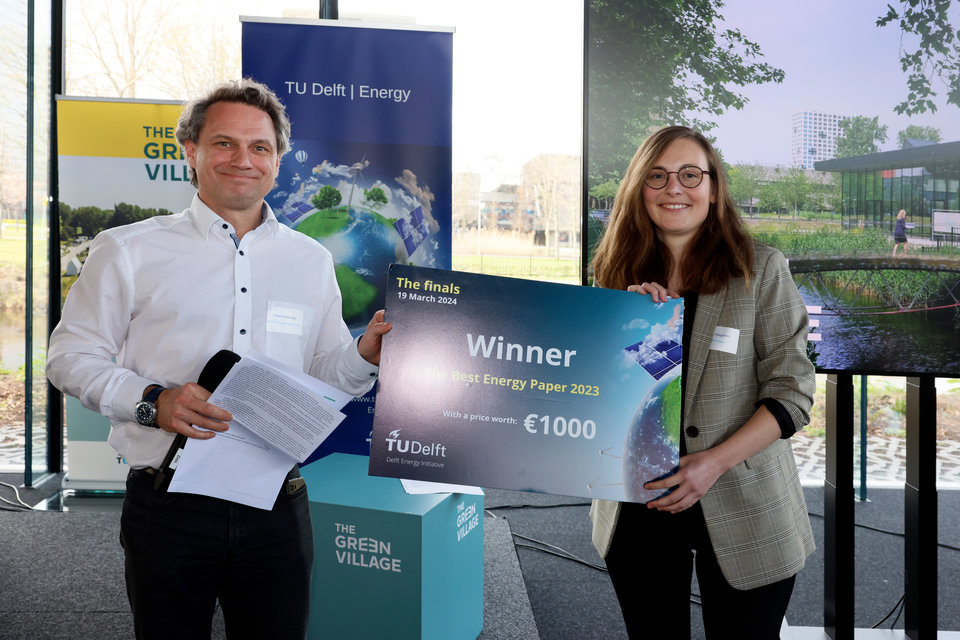Activeer hoog contrast
Ga naar hoofdcontent
News and Events
Organochlorides Mediate Oxidation Reactions Induced by Low Dose Ionizing Radiation
In cancer treatment, there exists an acute need to deliver drugs exclusively at the tumor site. This necessity arises from the adverse side effects associated with systemic treatments and the potential utilization of highly cytotoxic drugs. The use of ionizing radiation to trigger the release of chemotherapeutic drugs holds great promise in this regard, both to achieve local, targeted release as well as in the context of combined radiotherapy-chemotherapy approaches. However, a substantial challenge persists across these methodologies: the inherent insensitivity of molecular processes to ionizing radiation at clinically relevant radiation doses. In simpler terms, inducing selective breaking or making of chemical bonds -essential for drug release or activation- is exceedingly difficult at low radiation doses. To date, only a handful of highly specific methods have been reported. In a collaborative project with prof. Antonia Denkova (RST), where we discovered that certain organochloride compounds significantly amplify radiation-induced oxidation, this can be used to initiate release and activation of drugs. Remarkably, our method already demonstrates efficacy with a mere 4 Gy dose of gamma or X-rays, well within the confines of standard clinical radiotherapy doses. J. Liu, T. G. Brevé, B. Xu, P.-L. Hagedoorn, A.G. Denkova, R. Eelkema Abstract The controlled release of drugs using local ionizing radiation presents a promising approach for targeted cancer treatment, particularly when applied in concurrent radio-chemotherapy. In these approaches, radiation-generated reactive species often play an important role. However, the reactive species that can be used to trigger release have low yield and lack selectivity. Here, we demonstrate the generation of highly oxidative species when aqueous solutions containing low concentrations of organochlorides (such as chloroform) are irradiated with ionizing radiation at therapeutically relevant doses. These reactive species were identified as peroxyl radicals, which formed in a reaction cascade between organochlorides and aqueous electrons. We employed stilbene-based probes to investigate the oxidation process, showing double bond oxidation and cleavage. To translate this reactivity into a radiation-sensitive material, we have synthesized a micelle forming amphiphilic block copolymer that has stilbene as the linker between two blocks. Upon exposure to ionizing radiation, the oxidation of stilbene led to the cleavage of the polymer, which induces the dissociation of the block-copolymer micelles and the release of loaded drugs. Dr. Rienk Eelkema Read the publication
Paving the road towards automated homogeneous catalyst design
In this paper, we discuss the history of using computational tools for designing transition-metal based homogeneous catalysts, current strategies and what challenges we see. A lot is said about the power of machine learning nowadays, but you can only do machine learning if you can also generate data reliably, reproducibly and at large scale. This is still a problem for this class of catalysts. We discuss the open-source Open Bidentate Ligand eXplorer (OBeLiX) Python package that we are developing for this purpose. Adarsh V. Kalikadien, Adrian Mirza, Aydin Najl Hossaini, Dr. Avadakkam Sreenithya, Prof. Dr. Evgeny A. Pidko Abstract In the past decade, computational tools have become integral to catalyst design. They continue to offer significant support to experimental organic synthesis and catalysis researchers aiming for optimal reaction outcomes. More recently, data-driven approaches utilizing machine learning have garnered considerable attention for their expansive capabilities. This Perspective provides an overview of diverse initiatives in the realm of computational catalyst design and introduces our automated tools tailored for high-throughput in silico exploration of the chemical space. While valuable insights are gained through methods for high-throughput in silico exploration and analysis of chemical space, their degree of automation and modularity are key. We argue that the integration of data-driven, automated and modular workflows is key to enhancing homogeneous catalyst design on an unprecedented scale, contributing to the advancement of catalysis research. Adarsh Kalikadien Read the publication
Dit onderdeel wordt voor u geblokkeerd omdat het cookies bevat. Wilt u deze content (en anderen) alsnog bekijken? Door hier op te klikken geeft u alsnog toestemming voor het plaatsen van cookies.






